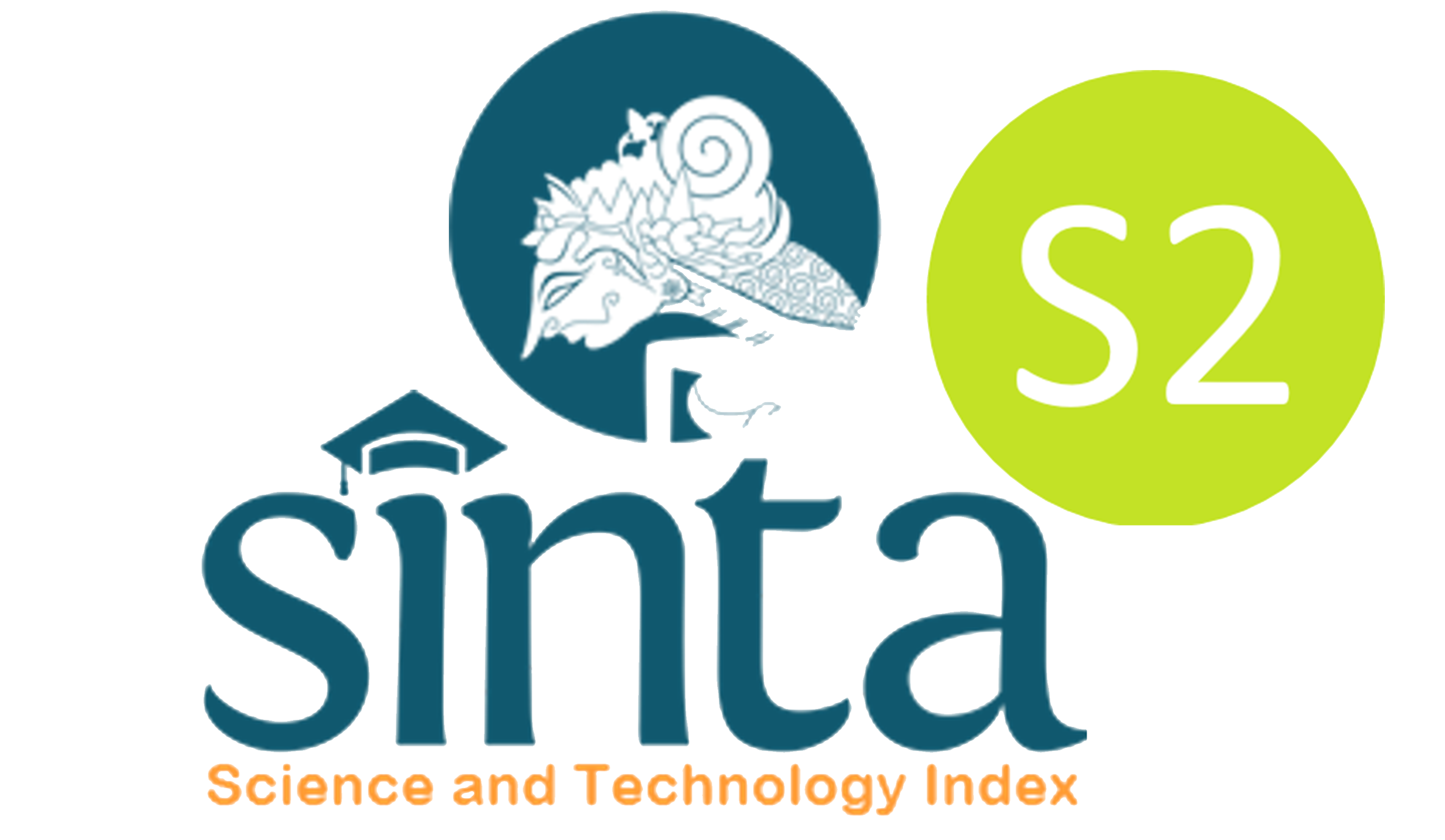Klasifikasi Topik Tugas Akhir Mahasiswa menggunakan Algoritma Particle Swarm Optimization dan K-Nearest Neighbor
Sumarni Sumarni(1*); Suhardi Rustam(2);
(1) Universitas Ichsan Gorontalo
(2) Universitas Ichsan Gorontalo
(*) Corresponding Author
AbstractProblems the Topic of the final project is a form of scientific writing that contains the results of observations from a study of the problems that occur with the use of methods related to the particular field of science. Every student in every program of study must draw up a final project. However, before embarking on writing the final project, each student must have the topic area as a destination, the step of selection the topic of final project is an initial step before working on the final task. One way to get the final task is to see the value of general courses as well as courses, concentration majors, the value of which dominate the is is decent to scope the research topic. this research is conducted on the application of the method of K-Nearest Neighbor (KNN) for categorization of the value of the courses of concentration for the coverage of the research topic, topic the entire value in the dataset will be classified by KNN and in the optimization with the Particle swarm Optimization algorithm (PSO). The experimental categorization of the final project is built with the training data Mahasiswa Universitas Ichsan Gorontalo that has been classified previously and test data derived from the entire value of the courses is not yet known categories. The results of the experiments, the value of the resulting accuracy of algorithms KNN, namely the value of the best accuracy with K=3, K Folds = 10 has an accuracy that is 72.46% and the Algorithm of KNN-PSO best accuracy with K=3, K Folds = 10 has an accuracy that is 89.86%, shows the accuracy is better by using the optimization algorithm
KeywordsTopic of the Final Assignment; Classification; KNN; PSO (Particle Swarm Optimization)
|
Full Text:PDF |
Article MetricsAbstract view: 681 timesPDF view: 344 times |
Digital Object Identifier https://doi.org/10.33096/ilkom.v12i2.604.168-175 https://doi.org/10.33096/ilkom.v12i2.604.168-175
|
Cite |
References
M. A. Banjarsari., I. Budiman, & A. Farmadi. “Penerapan K-Optimal Pada Algoritma KNN Untuk Prediksi Kelulusan Tepat Waktu Mahasiswa Program Studi Ilmu Komputer Fmipa Unlam”. Klik - Kumpulan Jurnal Ilmu Komputer, 2(2), 159–173. 2016. https://doi.org/10.20527/KLIK.V2I2.26
L. Dey, S. Chakraborty, A. Biswas, B. Bose, & S. Tiwari. “Sentiment Analysis of Review Datasets Using Naïve Bayes‘ and K-NN Classifier”. International Journal of Information Engineering and Electronic Business. 2016. https://doi.org/10.5815/ijieeb.2016.04.07.
S. B. Imandoust and M. Bolandraftar, “Application of K-Nearest Neighbor (KNN) Approach for Predicting Economic Events: Theoretical Background,” vol. 3, no. 5, pp. 605–610, 2013.
M. E. Lasulika, “Prediksi harga komoditi jagung menggunakan K-NN dan Particle Swarm Optimazation,” vol. 9, pp. 233–238, 2017.
S. Y. Pandie. “Emerensye, Implementasi Algoritma Data Mining K-Nearest Neighbor (K-NN) Dalam Pengambilan Keputusan Pengajuan Kredit”. Seminar Nasional Sains dan Teknik, Kupang. 2012
H. He, & C. Alippi. Conference report for 2014 IEEE symposium series on computational intelligence (IEEE SSCI 2014) [Conference Reports]. IEEE Computational Intelligence Magazine, 10(2), 10–12. https://doi.org/10.1109/MCI.2015.2405273
R. N. Whidhiasih, N. A. Wahanani and S. Supriyanto, “Klasifikasi buah belimbing berdasarkan citra Red-Greenblue menggunakan KNN dan LDA”, Jurnal Penelitian Ilmu Komputer, System Embedded & Logic 1(1): 29-35, 2013
S. I. Bafandeh, dkk, “Application of K-Nearest Neighbor (KNN) Approach for Predicting Economic Events”: Theoretical Background, S.B Imandoust et al. Int. Journal of Engineering Research and Applications. Vol. 3, Issue 5, 2013
D. Kurniawan, W. Wibowo, & P. Y. Astuti. “Pemanfaatan Educational Data Mining (Edm) Untuk Memprediksi Masa Studi Mahasiswa Menggunakan Algoritma C4.5 (Studi Kasus: TI-S1 Udinus)”. Momentum, 12, 48–52. 2007a.
D. Kurniawan, W. Wibowo, & P. Y. Astuti. “Pemanfaatan Educational Data Mining (Edm) Untuk Memprediksi Masa Studi Mahasiswa Menggunakan Algoritma C4.5 (Studi Kasus: TI-S1 Udinus)”. Momentum. 2007b.
G. I. Marthasari. “Implementasi Teknik Data Mining untuk Evaluasi Kinerja Mahasiswa Berdasarkan Data Akademik”. Fountain of Informatics Journal, 2(2), 20. 2017 https://doi.org/10.21111/fij.v2i2.1216
M. S. Mustafa, & I. W. Simpen. Perancangan Aplikasi Prediksi Kelulusan Tepat Waktu Bagi Mahasiswa Baru dengan Teknik Data Mining (Studi Kasus: Data Akademik Mahasiswa STMIK Dipanegara Makassar). Creative Information Technology Journal, 1(4), 270. 2015.
https://doi.org/10.24076/citec.2014v1i4.27
A. Rohman. “Model Algoritma K-Nearest Neighbor (K-Nn) Untuk Prediksi Kelulusan Mahasiswa”. Neo Teknika, 1(1). 2015. https://doi.org/10.1017/CBO9781107415324.004
S. Rustam, H. A. Santoso, & C. Supriyanto. “Optimasi K-Means Clustering Untuk Identifikasi Daerah Endemik Penyakit Menular Dengan Algoritma Particle Swarm Optimization Di Kota Semarang”. ILKOM Jurnal Ilmiah, 10(3), 251. 2018. https://doi.org/10.33096/ilkom.v10i3.342.251-259
J. Han, Data Mining: Concepts and Techniques (The Morgan Kaufmann Series in Data Management Systems). 2011.
G. I. Marthasari, “Implementasi Teknik Data Mining untuk Evaluasi Kinerja Mahasiswa Berdasarkan Data Akademik,” Fountain Informatics J., vol. 2, no. 2, p. 20, 2017.
Refbacks
- There are currently no refbacks.
Copyright (c) 2020 Sumarni Sumarni, Suhardi Rustam

This work is licensed under a Creative Commons Attribution-ShareAlike 4.0 International License.










